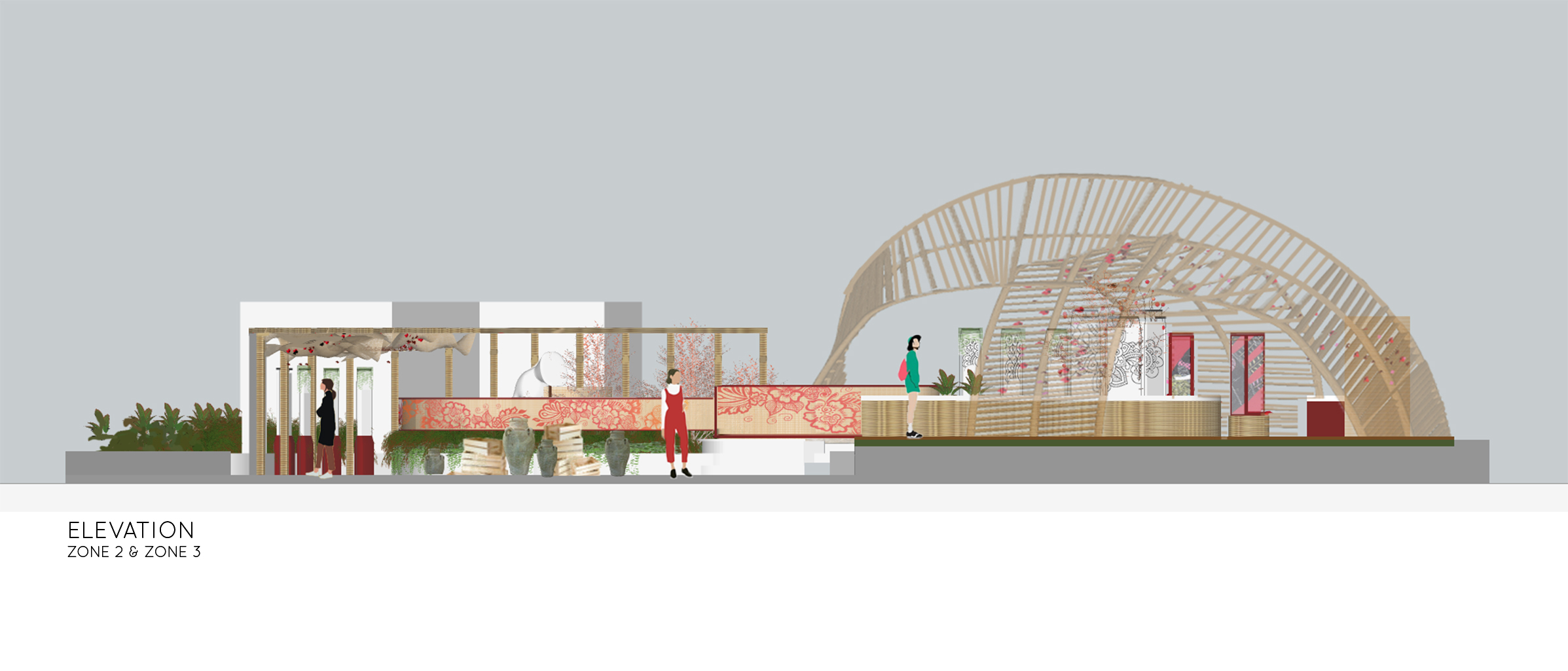Located in the rooftop area of Tekka Place, Ink Garden is a pop-up museum that educates visitors about Mehndi (known famously as Henna), one of the most famous artistry available in the history of Singapore’s Little India. Thousands of years, people of Indian culture have been devoted to the ornamental art of Mehndi. A quest for the perfect pattern is a quest to describe the human spirit. The exhibition highlights the importance of understanding the stories and the personal connection that these Indian artists share with their art. Ink Garden shines light to the people that use the art form to bring awareness to the values that Indian women and men uphold for centuries.

The concept for the exhibition is primarily taken from the origin of the mehndi. The ink, used to taint the skin of the user, is created directly from the henna plants. This idea becomes the source of inspiration for the design language of the entire space. Using the open and natural phenomenon of the existing site, the space is intended to look like a lush Indian Henna Garden as if created by Lakshmi, the Goddess of Beauty, to celebrate the beautiful craft. The pop-up museum uses a guided linear flow and an interactive system where visitors get to save and accumulate all their favorite designs, information, and interactions with all of the touchpoints available within the exhibition. The system uses a bracelet with radio-frequency identification (RFID) that allows visitors to register ID and record all of their experiences and designs that they like through the identification bracelet. Using this system, the exhibition provides a more personal connection to the art form, helping them to understand the values and meaning behind the designs better. By having them to tap and scan on every interactions, design, and information they use and like, the visitors at the end get to have a take-away (in the form of e-catalog and henna design drawn by live artists) that is personal for each visit, a literal representation of bringing human spirit into an art form. Ther visit becomes their own story of henna experience.

A deep shade of red is used as a primary color scheme throughout the entire space. It represents the color of the ink that mehndi paste provides, as well as the color of the henna’s plants flowers. The exhibition intentionally uses the outdoor and garden-like elements given by the existing site by adding more natural elements and organic materials. Rattan and wood are used to accentuate the traditional feel of Little India while maintaining the entire space look vibrant and contemporary.The structure design for the outdoor area of the pop-up museum provides a partial relief from the afternoon heat as well as a sense of privacy for the event to function without disturbing the activities on the restaurant and other areas in the rooftop that is not within the exhibition.






